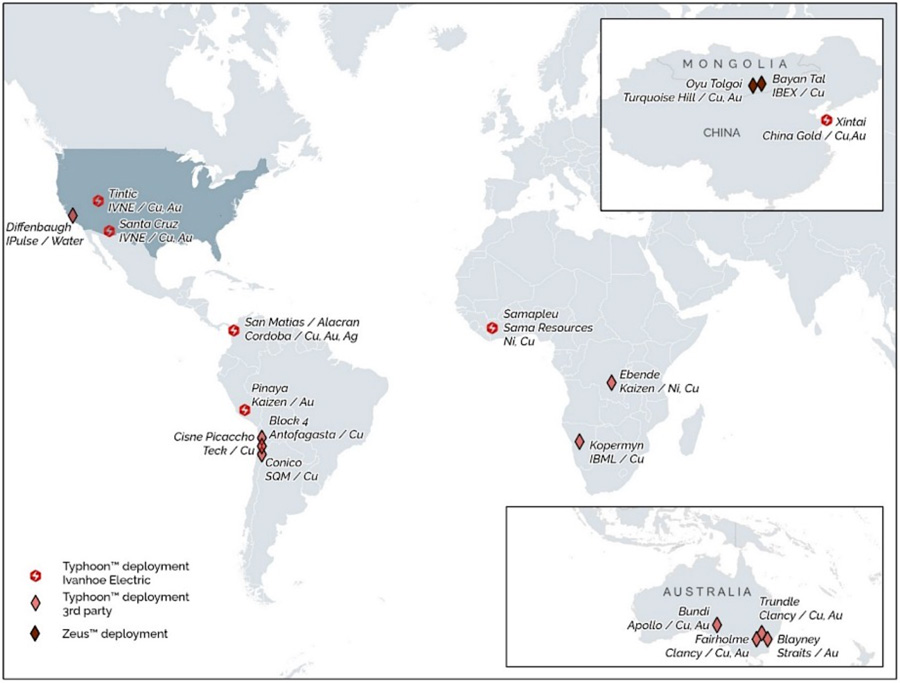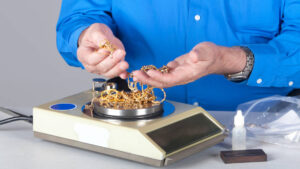Kincora to drill Trundle target identified using same tech that uncovered huge Oyu Tolgoi copper mine

All eyes will be on Kincora as it starts drilling a target at its Trundle project that was identified by the same technology used to unearth the massive Oyu Tolgoi copper-gold mine.
Kincora Copper is gearing up to drill test a target at its Trundle project that was identified by proprietary technology owned by mining force Robert Friedland that was used to unearth the massive Oyu Tolgoi copper-gold mine and was the focus last week of a $US126m deal between Ivanhoe Electric and Ma’aden.
Having completed an oversubscribed capital raising last month, Kincora Copper (ASX:KCC) is kicking off 2023 with a fresh round of drilling at its Trundle project aimed at proving up the next major copper-gold porphyry discovery in the Lachlan Fold Belt of NSW.
Porphyry deposits, like Rio Tinto’s (ASX:RIO) Oyu Tolgoi, are generally very large and responsible for ~60 per cent of the world’s copper, most of its molybdenum, and significant amounts of gold and silver.
Copper continues to make headlines as a critical part of the global electrification push, with the sector witnessing substantial M&A activity as majors look to shore up supply – a move that has seen the price of the red metal quickly move up towards $US10,000 ($14,356) a tonne.
Goldman Sachs analyst Jeff Currie sees the red metal potentially hitting $US11,500 a tonne by the end of 2023.
One key indicator of the increasingly desperate need to find more of these critical “future minerals” is moves being made by Ivanhoe Mines founder Robert Friedland and ~$US48 billion market capitalised Saudi Arabian Mining Company Ma’aden (Ma’aden).
Last week Friedland joined forces Ma’aden in a $US126.4m deal to bring Ivanhoe Electric’s (market capitalisation ~$US1.4 billion) “disruptive” Typhoon™ Induced Polarisation (IP) data acquisition system to the Middle Eastern country, where up to 48,500sq.km of ground will be made available for exploration.
Typhoon™, which is proprietary to the Friedland group, originally known as Zeus™, was developed in Mongolia to assist with the discovery and delineation of the huge Oyu Tolgoi deposits – set to be the world’s fourth largest copper operation by 2030 producing 500,000 tonnes per annum.
Ivanhoe Electric says Typhoon™ is one of the “most accurate and powerful geophysical survey technologies available to mineral explorers today”.
The technology is designed to provide better quality primary signal, allowing for higher resolution, larger scale and deeper detection of water, oil and sulphide minerals containing copper, gold, silver, and nickel than existing technologies.
The map below shows that the Zeus™/Typhoon™ system has only been deployed on a relatively small number of projects globally, including the Trundle and Fairholme projects now owned by Kincora (formerly Clancy).

The Friedland group, via High Powered Exploration (HPX), completed the Typhoon™ survey at Trundle in 2015 and identified 17 targets. HPX only drilled one hole, which was a technical success, before the last commodity cycle downturn when it made sense for them to instead look to buy discoveries and development projects.
Coincidentally, a week after Friedland announced the Saudi Arabian interest in the Typhoon™ system at the Future Minerals Forum in Riyadh, Kincora is about to start drilling a Typhoon™ target at its Trundle project this week.
CEO Sam Spring explained to Stockhead “our target, at the Dunn’s North prospect, has a Typhoon™ chargeability high – suggesting sulphides such as copper and/or gold – which is coincident with a magnetic anomaly, suggesting a porphyry complex, where previous shallow drilling returned 10m at 1.99 grams per tonne (g/t) gold and 0.12%, from 36m depth only, with that interval near the very end of hole (hole finishing at 48m).”
“It appears that historical hole, drilled over a decade before the geophysics were available, effectively stopped short in ore grade mineralisation and fell just on the margin of entering the coincident Typhoon™ chargeability and magnetic target.
“At the neighbouring Dunn’s South target, which we think is part of the same system based on the magnetics and previous down-hole mineralisation, limited drilling by Newcrest has confirmed a favourable host and porphyry system environment, with fertile shoshonitic intrusives comparable to Northparkes and Cadia with chalcopyrite and bornite mineralisation.
“The concept we are looking to drill test is that there is a much larger porphyry source responsible for that ore grade mineralisation which hasn’t yet been drilled.
“The geophysics supports that a further 200-400 metre extension is possible in this first hole at Dunn’s North and returning the same grade as the 10-metre intercept, or even better if we intersect the core of a finger/pencil type porphyry pipe typical of the Macquarie Arc, would certainly support our belief that Trundle hosts the potential for a series of economic deposits and a quarter of the world-class Northparkes Igneous Complex.”
Dunn’s North and then Dunn’s South targets are the first of a total of five adjacent systems and separate large-scale porphyry targets to be tested in this current phase of drilling across an existing 3.2km mineralised strike, which remains open, at the Trundle project.
“We certainly provide very significant and immediate leverage to the Typhoon™ system, but with the high conviction for the Dunn’s North and South targets primarily driven by proven very favourable geology and open mineralisation near surface,” Spring noted.
“Hopefully it works like it did at Oyu Tolgoi and is reportedly doing again right now in the US for Ivanhoe Electric.”
What is for certain is that Ma’aden and Ivanhoe Electric are putting very significant hard dollars behind their belief in the Typhoon™ system.
This article was developed in collaboration with Kincora Copper, a Stockhead advertiser at the time of publishing.
This article does not constitute financial product advice. You should consider obtaining independent advice before making any financial decisions.
Related Topics

UNLOCK INSIGHTS
Discover the untold stories of emerging ASX stocks.
Daily news and expert analysis, it's free to subscribe.
By proceeding, you confirm you understand that we handle personal information in accordance with our Privacy Policy.








